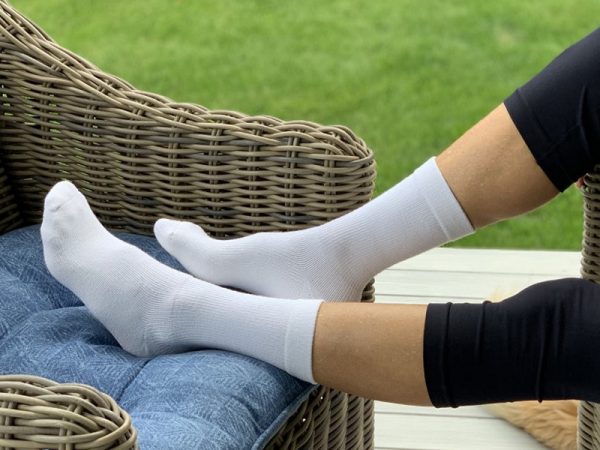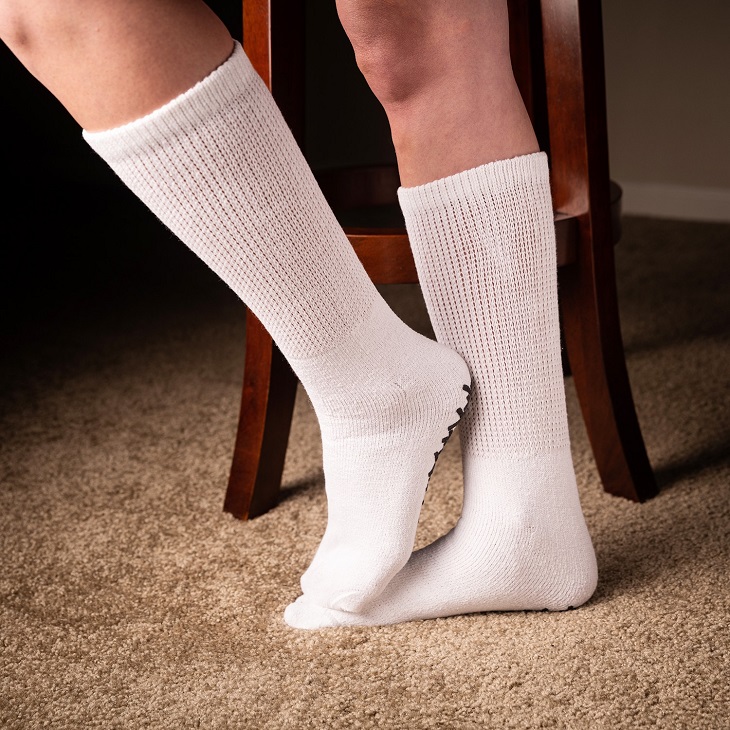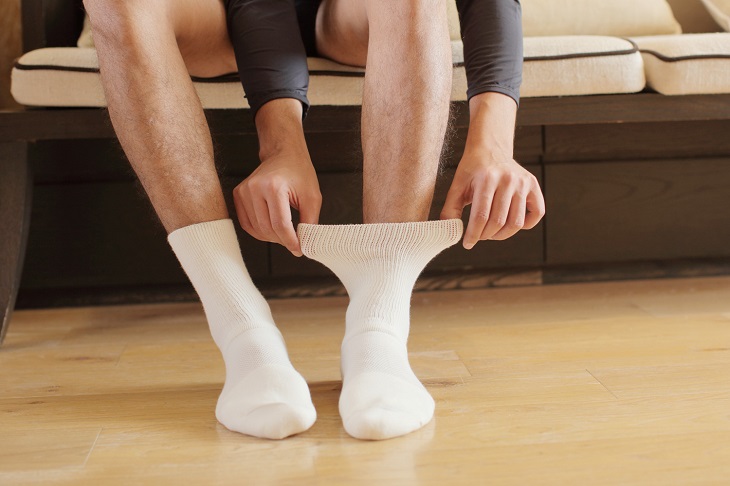22
Jun

Diabetes is a chronic disease that may need lifelong medication and care. There are several health issues that might arise, some of which impact the foot. Namely, diabetes can lead to infections, nerve damage, and poor blood circulation. These health problems can make it difficult to heal wounds and even put a person at risk for amputation.
If you have diabetes, you should take good care of your feet. That means checking them every day for any cuts, sores, or other issues. You should also wear specialised diabetic compression socks or stockings to help improve circulation.

In simple terms, these socks are designed to improve blood circulation and prevent foot complications related to diabetes. They’re generally made from a soft material, such as cotton, and have little to no elasticity. This helps reduce the risk of constricting blood vessels and further reducing blood flow.
If you’re interested in the details, here are some additional features of diabetic compression socks:
Diabetes patients have a higher rate of foot issues than non-diabetics. Because blood arteries in your legs and feet can be damaged, affecting circulation, promoting edema, and increasing your risk of infection, it’s essential to take care of these extremities.
You should strive to get them checked once a year by your diabetes healthcare professional. A foot exam usually includes a visual examination of your feet for edema or symptoms of illness, as well as tests to determine your level of sensation.

Given the importance of foot care for diabetics, it’s no surprise that compression socks have become a popular choice. Here are some of the benefits they offer:
The cushioned soles and soft material of most diabetic compression socks help protect your feet from injury and further damage. The shock-absorbing qualities can also reduce the impact of walking and running, which is beneficial for those with diabetes-related foot pain.
If you have diabetes, you might experience swelling (Edema) in your legs and ankles as a result of impaired blood flow. Wearing compression socks can help reduce this swelling by promoting circulation and preventing fluid build-up.
Diabetic nerve pain, or neuropathy, is a common complication of diabetes. It can cause burning, tingling, and numbness in the feet and legs. This can be quite painful and make it difficult to walk or stand for long periods of time. Specialised diabetic socks with compression can help alleviate this pain and provide much-needed support.

If you’ve been prescribed compression socks, it’s important to put them on properly to ensure they’re effective. First, make sure your feet are clean and dry. Then, gently roll the socks up your leg, being careful not to crease them. Once they’re in place, smooth out any wrinkles or bunches.
You should also consult with your healthcare professional to make sure you’re wearing the right-sized sock. If they’re too tight, they can constrict blood flow and cause pain, while socks that are too loose won’t offer the desired level of compression.
Taking care of your socks is important to make sure they last and continue to offer the desired compression. Most models can be machine-washed on a delicate cycle, but it’s always best to check the care instructions first. You should also avoid using fabric softener, as this can diminish their efficacy.
When it comes to drying them, most experts recommend air-drying to prevent shrinkage. If you must use a dryer, make sure to set it on a low or delicate setting to avoid damaging the fabric.